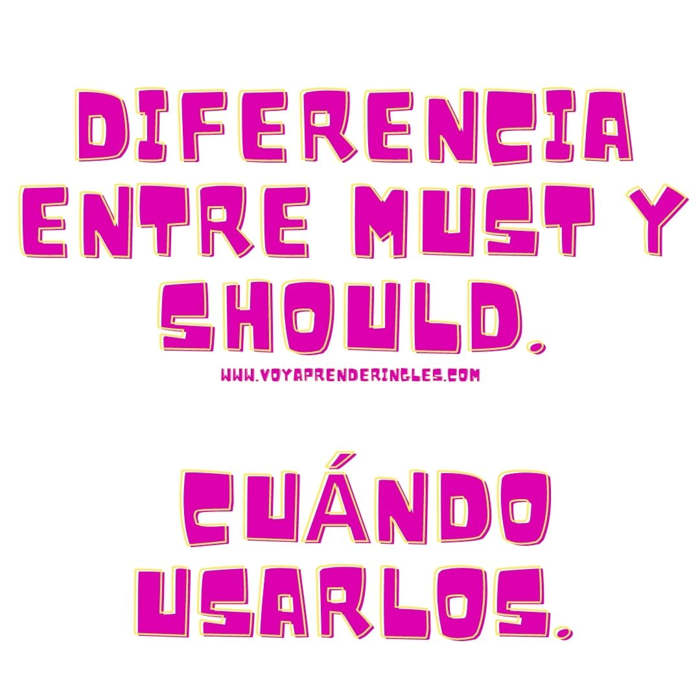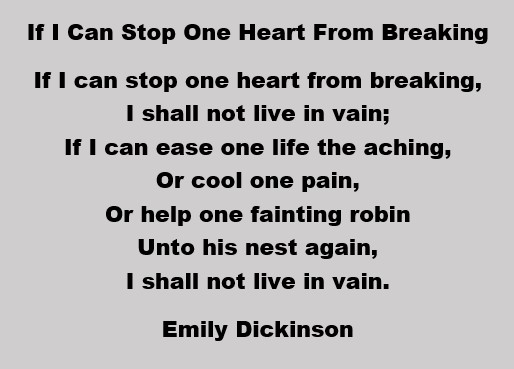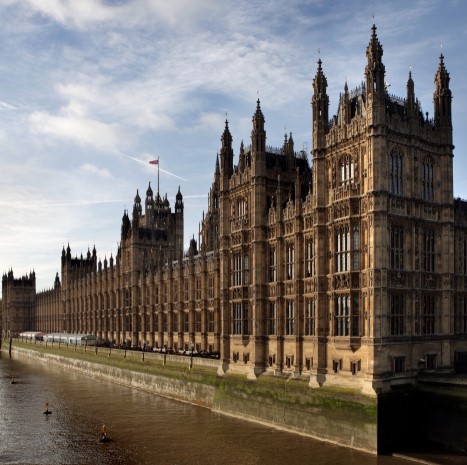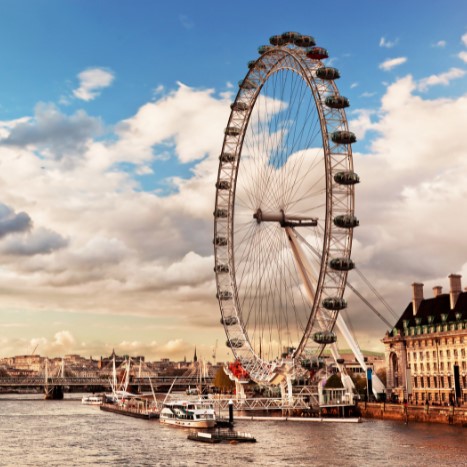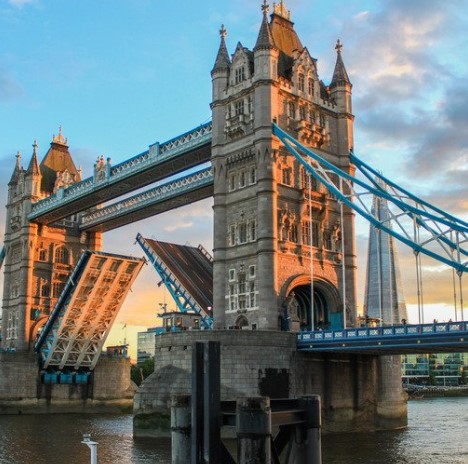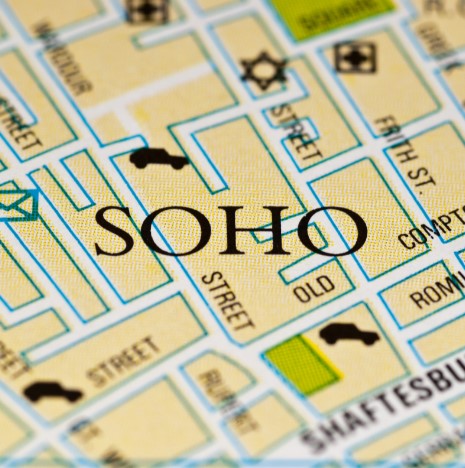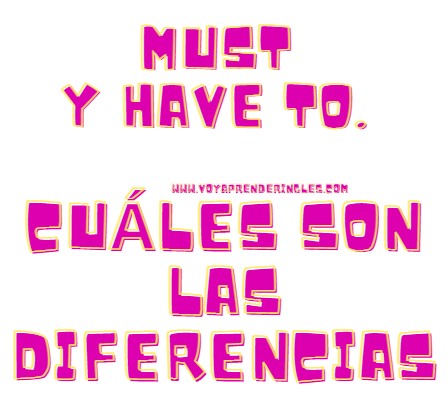
Gramática Inglesa - English Grammar - Recursos Educativos en inglés
Cuándo usar MUST y HAVE TO
Puedes dudar entre el must y el have to. ¡Es cierto que son muy parecidos! En la forma afirmativa, ambos expresan obligación. La diferencia está en la forma negativa. Te lo explico todo a continuación:
Must
Must es un modal, o auxiliar modal. Aquí tienes una lección específica sobre MUST.
Se utiliza justo antes de la base verbal.
I must do my food. Debo hacer mi comida. (obligación).
Vemos que justo después de must, pongo una base verbal, es decir, el infinitivo, sin la palabra To. Esto es invariable. Nunca habrá una conjugación después de MUST o después de cualquier modal.
- She must talk.
- They must study.
- We must be quiet.
Talk, study, be: Vemos que sea cual sea el verbo, no hay conjugación después de Must.
HAVE TO
Es casi lo mismo, pero (necesariamente), está el TO antes del verbo. Tomemos el mismo ejemplo:
I have to do my food. Tengo que hacer mi comida. (obligación).
Do está en infinitivo y también es invariable.
- She has to talk.
- They have to study.
- We have to be quiet.
Talk, study, be: Los verbos están en infinitivo y, por tanto, también son invariables.
Must y have to: ¿Significan lo mismo?
Como hemos visto en los ejemplos anteriores, ambas formas expresan la obligación en sentido afirmativo.
Para ser realmente precisos, podemos señalar que hay pequeños matices entre ambos. De hecho, have to se utiliza cuando la obligación viene de fuera, cuando alguien o algo distinto a nosotros nos impone la obligación. Pero es una cuestión de matiz, y se pueden utilizar las dos expresiones indistintamente, porque están muy cerca.
Las cosas cambiarán cuando hablemos en forma negativa:
Mustn't y Don't have to: un significado diferente en la forma negativa
Volvamos al mismo ejemplo, pero con Mustn't (o Must Not, es lo mismo):
- I Mustn't do my food. No debo hacer mi comida.
Esto significa que NO DEBO hacer la comida.
Sin embargo, si utilizo Don't have to, el significado NO es el mismo:
- I Don't have to do my food. / I do not have to do my food.
Esto significa que no tengo que hacer la comida.
Mustn't es la prohibición.
Don't have to no es ninguna obligación.
🔆 También te puede interesar:
- Cómo usar Must y should - Diferencias
- Cómo usar To y for - Diferencias
- Cómo usar Can y Could - Verbos modales
- Cómo preguntar y expresar la posesión en inglés
- Cómo usar May y might - Verbos modales
- Conditionals in English - El condicional en Inglés
- Adjetivos y pronombres demostrativos en Inglés
- Pronombres Posesivos en inglés - Possessive Pronouns
- Adjetivos Posesivos en Inglés - Possessive adjectives
- ¿Cómo aprender inglés fácil y desde casa?
- Plural de los sustantivos en inglés
- Many more, a lot more y Much more. Usos en inglés
- ¿Qué son los phrasal verbs en inglés? Los más usados
- Cómo expresar opiniones en inglés
- Uso de whose en inglés - Pronombres relativos
- Who, which y that - Pronombres Relativos en inglés
- Was going to - El futuro en el pasado
- DO y MAKE en inglés ¿Cuáles son las diferencias?
- Cuándo usar Since, For, Ago: ¿Cuáles son las diferencias?
- The Gerund - El gerundio en inglés
- El Imperativo en Inglés - Imperative
- El comparativo y el superlativo en inglés
- Preguntas con WH-Questions 01 - What, where, why, who
- Preguntas con WH-Questions 02 - When, Which, Whose, How
- Cómo expresar cantidades en inglés
- Adjectives - Los Adjetivos en Inglés
- Uso de some / any acompañando nombres contables/incontables
- Modal verbs - Verbos modales en inglés
- El tiempo futuro en inglés
- Present Perfect Progressive - Presente perfecto progresivo
- Present perfect - El presente perfecto inglés
- Pretérito progresivo o continuo en inglés
- Simple past - El pretérito o pasado simple en inglés
- Presente continuo - Forma Afirmativa - English grammar
- Presente continuo - Forma Negativa
- Puntuación en inglés - All about punctuation in English
- Los verbos Auxiliares en inglés - Auxiliary Verbs
- Verbos irregulares en inglés, la lista que debes conocer
- Cómo decir la fecha en inglés - How to say the date in English
- Construir frases simples - To build a simple sentence
- Nombres contables e incontables en inglés
- Presente continuo - Forma Interrogativa
- Cómo Preguntar y decir el precio en inglés
